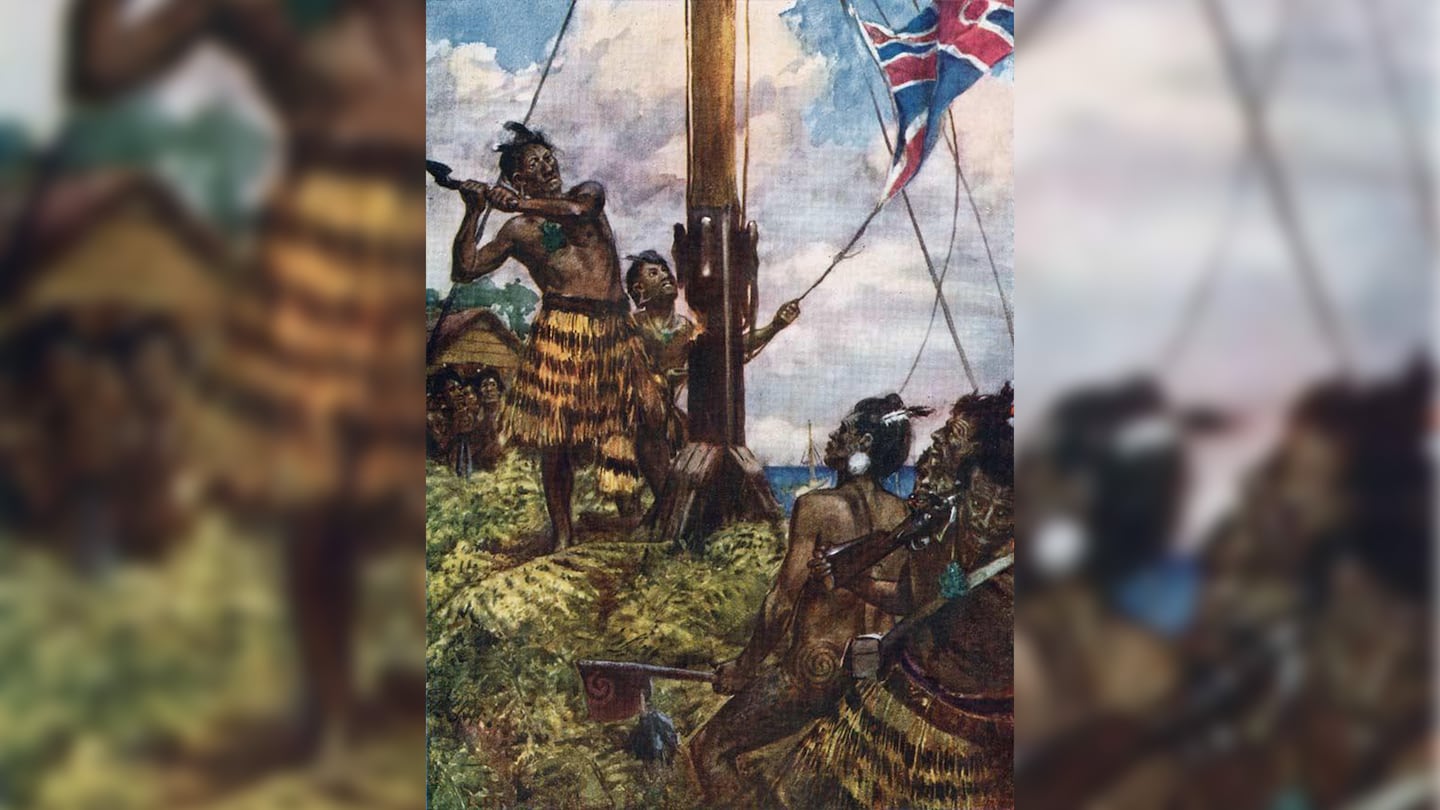180 years ago today, history was made with one of the first recorded instances of political activism in Aotearoa.
Ngāpuhi chief Hōne Heke Pōkai chopped down the flag pole in Kororāreka (Russell), which was flying the British flag, on January 19, 1845.
It was the third time the flagpole had been struck down, but only the second time by Heke. The flagpole was first chopped down by Pakaraka chief Te Haratua on July 8, 1844, and then again on January 10, 1845.
The reason Heke cut down the flagpole relates to the ongoing debate over Te Tiriti o Waitangi, the document that Heke was among the first to sign.
The act symbolised his rejection of the colonisers' interpretation that Māori had ceded sovereignty, a view Heke and many other rangatira did not share.
At the same time, the political and economic importance of the Bay of Islands was declining, particularly after the capital of Aotearoa moved to Auckland. Tariffs and new trading restrictions meant fewer ships visited the Bay of Islands, causing economic hardship for local Māori communities who had previously thrived on trade.
One of Heke’s descendants, Mutunga Rameka, told Te Ao Māori News he was on a mission to celebrate his ancestor Heke by building a marae in his honour, something he says was afforded to other signatories of Te Tiriti, but not to Heke.
“Koia anake te tupuna kāhore ōna whare tūpuna. Ko ngā tūpuna katoa i hainatia i te Tiriti, he wāhi tō rātou, engari a Hone Heke”
“Kāhore tōna whare tupuna. Nā reira ko taku wawata i mua i taku rirohanga ki te pō, kia whakatū tētahi wāhi whare tūpuna ki roto o Te Kaikohekohe”.
Despite Heke’s fame, little information was passed down through the generations, with Rameka’s whānau having to rely on colonial settler accounts of what happened in Russells.
“Me pono ahau i ahau e tamariki ana, kāhore ahau i mōhio Ka... kāhore ahau i tupu ake me te mōhio ki tēnei tupuna.
“Hoinō i mōhio i ngā kōrero a te Pākehā, i mōhio nāna i poro i te pou... i te pou kara, atu i tērā kāhore i tino mōhio”
Luckily for the descendant, a chest full of family heirlooms, cared for by Rameka’s grandfather, contained a sizeable flag bearing the name Te Matarahurahu, Heke’s hapū.
“I reira ka tīmata ahau te mōhio ki... ki tēnei tangata kia heke me ōna mahi i te wā e tamariki ana ia i konei ki Te Kaikohe i te wā i herea e rewharewhai i a ia ki te rākau rāua tahi ko tana māmā.
“Anā, me ngā mahi heke ki roto o Te Pewhairangi.”
What happened after the flag pole was chopped?
Like the previous times, the flagpole was re-erected. Nothing significant happened over February, but on March 11, it was cut down again, marking the beginning of the ‘Flagstaff War,’ also known as the ‘Northern War.’
The conflict lasted less than a year and involved not only Māori fighting against the Crown but also internal divisions among Ngāpuhi.
The war ended in a stalemate on January 11, 1846.




